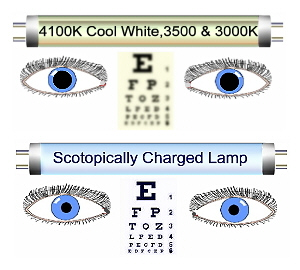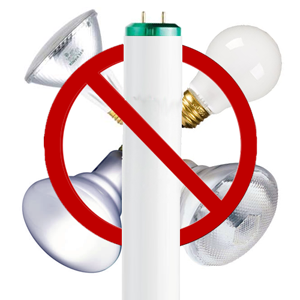Why Fluorescent Light Bulbs Are Having Price Increases | Rare Earth Metals Shortage
We realize that there have been numerous articles and stories trying to explain how rare earth metals are effecting fluorescent light bulbs prices. Most of these articles are very elaborate and tell you a lot of information you might not understand. So here is a very simple explanation we can give you.

The United States ceased production of rare earth metals in 1999 in an effort to protect our natural resources. When the United States made the decision, it forced manufacturers to purchase these rare earth elements from other countries such as China. China realized that the U.S. and Arabian countries have oil, but the shear size of the rare earth deposits in China could be China’s version of a natural resource super power. Currently China produces 97% of all rare earth metals in the world.
China Reduces Export Of Rate Earth Metals
China has reached a point in their economic growth where the needs of China for rare earth metals are becoming much greater. Given the economic growth needs of China, the Chinese government has drastically reduced the export of these metals to other countries. This is a move on their part to protect their own growth, but also force more manufacturing to come to china.
Rare Earth Metals In Fluorescent Lamps

Of the rare earth metals mined in China are Yttrium (Y), Europium (Eu), and Terbium (Tb). These rare earth metals are phosphors, and are refined and processed into blended phosphors used to produce fluorescent and compact fluorescent light bulbs. This is what is know as Tri-Phosphor Technology. In the reduction of export of these metals to the U.S. and for fluorescent lamps being made in China for export to the U.S., the costs have risen exorbitantly on the simple basis of supply and demand.
Every light bulb manufacturer has been victim of this situation now referred to as the “Phosphor Crisis” or “Rare Earth Mineral Crisis”, and the costs are rising rapidly. The white powder inside each fluorescent lamp is made from the processed rare earth minerals. Manufacturers such as Sylvania, Philips, General Electric and other major manufacturers of fluorescent bulbs can’t buy the amounts of phosphors needed to meet U.S. production requirements. As the cost of these rare earth minerals rises, and the supply is reduced, the cost of fluorescent and CFL light bulbs is rising on a daily basis.
Will Fluorescent Price Increase Level Off?
It is very hard to predict where the end of this crisis will be without Government interference. Many U.S. mines that were previously mothballed are recommencing mining of the U.S. supply. Not only are these elements rare, but they are also used in the production of hybrid cars, defense navigation and weapons technology, and electronic devices. The United States Congress is more than aware of the problem and claims that this situation will not only effect Americans economically, but it also poses a risk to our national security. The U.S. mines will not be completely up and running, nor at a level of price competitiveness for several years to come. For now and the foreseeable future, these costs affecting several industries and the lighting industry will continue to rise incrementally.

 No, you didn’t make any mistake when you read the headline of this article. Synergy Lighting has a special program for businesses within
No, you didn’t make any mistake when you read the headline of this article. Synergy Lighting has a special program for businesses within  The locking base is a very simple device that ensures the business owner and the Department of Energy that once you begin using the CFL bulb, that an employee will not accidentally insert the wrong bulb into the socket thus defeating the concept of energy savings. Additionally this lowers your replacement cost of replacement light bulbs in the future. For installation just simply screw the base into the lamp socket and it stays there. The posts on the base of the bulb simply plug and turn into the base and lock tight until time for replacement.
The locking base is a very simple device that ensures the business owner and the Department of Energy that once you begin using the CFL bulb, that an employee will not accidentally insert the wrong bulb into the socket thus defeating the concept of energy savings. Additionally this lowers your replacement cost of replacement light bulbs in the future. For installation just simply screw the base into the lamp socket and it stays there. The posts on the base of the bulb simply plug and turn into the base and lock tight until time for replacement.



